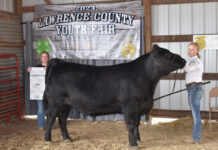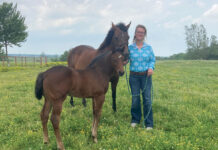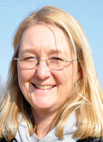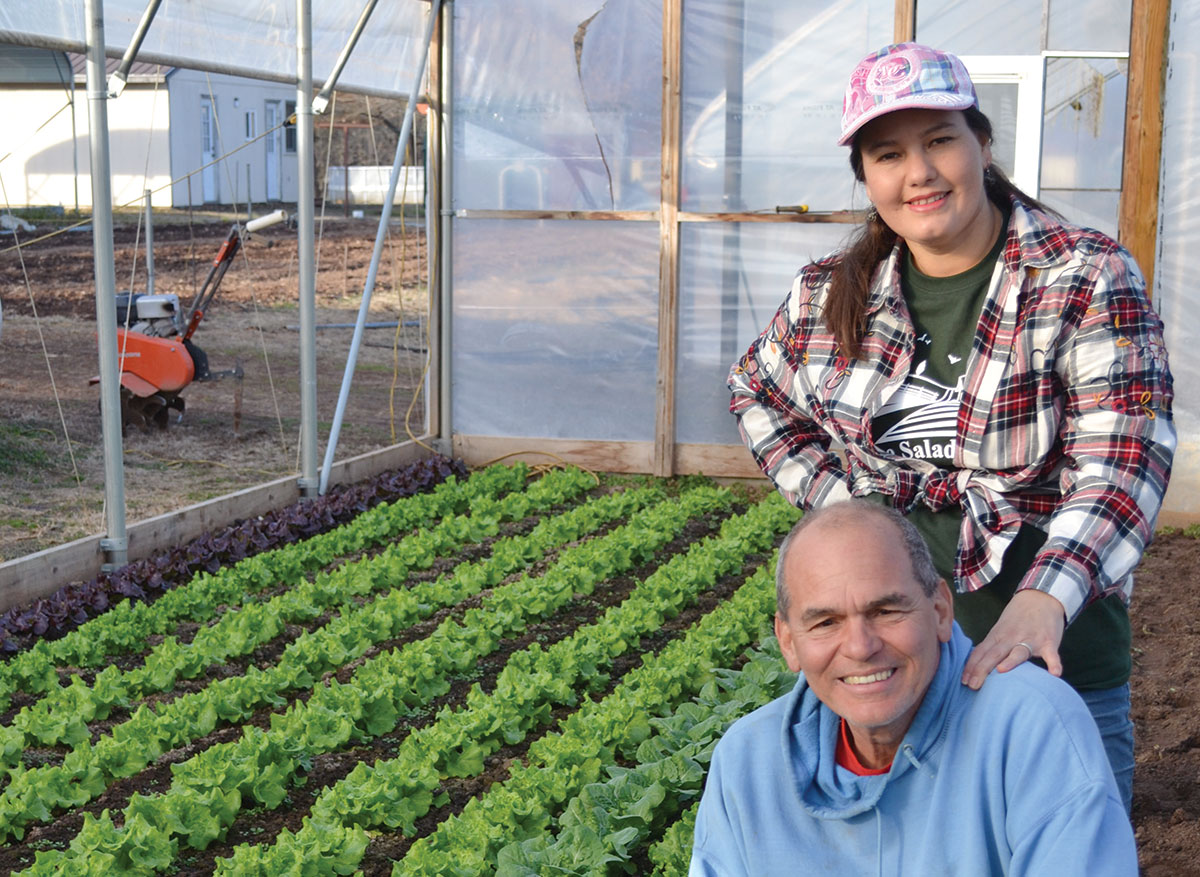
For the last decade, Robert Brooks has watched his dreams come to fruition on the same soil where his great-grandparents built their dreams years ago. As he glances at a hill near his home, Robert’s smile widens and he said, “I have pictures of my dad when he was 9 years old standing on that hill with his Shetland pony.” That “hill” is part of a 400-acre farm between Rogersville and Fordland, Mo. Robert and his family pieced together the farm as generations of the family passed down the property. “My grandparents bought all this and they worked it. There is a lot of blood, sweat and tears in these acres. And I just want to carry on that heritage and have something that I can pass down to my kids too,” reflected Robert.
Robert, his wife Angie, and daughters, 12-year-old Avery and 10-year-old Katie, also pour their share of blood, sweat and tears into the farm. The bulk of the work is due to their purebred Gelbvieh operation. The Brooks family runs up to 65 head of registered and commercial cattle. Though Robert grew up milking Holstein cows and showing Simmental cattle, the focus of the family farm now rests on quality Gelbviehs. “I can’t say enough good about the breed. They have held true to their roots. They are a maternal breed and have done well for us here. They seem to really fit our management strategy,” said Robert.
Robert works in partnership with his father Richard Brooks. Aside from always having a useful piece of fatherly advice, Richard brings years of cattle knowledge and know-how to the team. Richard started to AI cattle in the 1960s and learned how to conduct successful embryo transfers in the 1980s. Richard handles all the AI and embryo transfer work for the farm. Robert said he is fortunate to have his dad as his partner. “He’s the best,” said Robert.
Together, Robert and Richard manage their Gelbvieh herd under their farm name, RLB Genetics. Their focus falls squarely on top-notch genetics. The Brooks family currently uses three purebred Gelbvieh females as donor cows in their embryo transfer program. The donor cows are flushed to either a purebred Gelbvieh bull, or a Black or Red Angus bull. Robert appreciates the growth and muscling of the purebred Gelbvieh calves, but he finds he also really likes the Balancer calves. “I am kind of a purest, but some Gelbvieh tend to be a little heavier-throated than some breeds. And the Angus kind of refine them out and give them eye appeal and showiness,” said Robert.
In order to keep excellent genetics, Robert and Richard AI their heifers and momma cows to the leading bulls in the industry. Robert watches to see which bulls and their offspring command the highest prices in the sale ring and then researches to see if that bull will work well with their program. Though they pay close attention to EPDs, the numbers are only part of the breeding puzzle. “As technology advances, there are ways we can test these cattle now that wasn’t available previously, but I think there is a fine line there in how you use that because while there is a science to breeding cattle, there is just as much of an art to it as anything,” said Robert.
Robert said it is not always the momma cows with the highest EPDs that thrive on his farm. “We have found through the years that you can actually get better performance by moderating things rather than shooting for the highest growth and milk. And sometimes those animals with the more average EPDs actually will out-perform the other cattle because they are genetically predisposed to performing on the pasture type that we have here,” explained Robert.
Over the next few years, RLB Genetics plans to reduce the size of their cow herd, in order to concentrate solely on elite genetics. They plan to do more line breeding, zeroing in on specific characteristics with the goal of building homozygosity. For the Brooks’ farm, the motto is quality not quantity. “You are going to have the same amount of feed going into these things one way or another. My philosophy is, I’d rather be selling a $3,000 calf out of a cow than a $600 to $800 calf at market. It makes more sense financially,” explained Robert.
On top of a demanding cattle operation, Robert works fulltime as a Senior Vice-President for IsoAge Technologies. He also, recently started his own company, Classic Transportation Services. Plus, he serves as board president for the Fordland school district. How does he manage it all? “The farm is my sanity,” Robert explained. And it brings him joy knowing he will pass that gift to the next generation.







